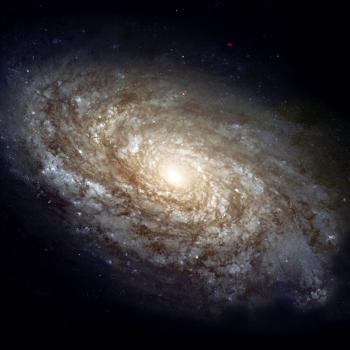
Notes from Carlo Rovelli, Reality Is Not What It Seems: The Journey to Quantum Gravity, translated by Simon Carnell and Erica Segre (Penguin, 2017):
At the age of twenty-five, Einstein sends to the Annalen der Physik three articles. Each was worthy of a Nobel Prize, and more. Each one of the three is a pillar supporting our understanding of the world. (51)
Of these, the most generally famous is the second article, which introduced his theory of “relativity.” More specifically, it introduced “special relativity,” which Rovelli, significantly using aesthetic terminology, describes as “astonishing and extremely elegant” (60).
But his theory of “general relativity,” which appeared in 1915, “is the most beautiful theory produced by physics” (61). Lev Landau, “the most outstanding theoretical physicist of the Soviet Union,” called it “the most beautiful of theories” (62). Reduced to its essence, for those who want to see it, it is, within the limits of my ability to show such notation here — L, for instance, should be a Greek majuscule lambda and p a Greek minuscule pi — simply this:
Rab – 1/2Rgab + Lgab = 8pGTab (73)
That’s it. A vision and an equation. (74)
Rovelli, who gives a brief explanation of the equation on page 74, points out that the equation was even simpler in 1915, because Einstein would not introduce the “cosmological constant” (which I’ve had to represent here as “+ Lgab“) until two years later. (Measurement of the “cosmological constant” won a Nobel Prize in 2011 [74n].)
But within this equation there is a teeming universe. And here the magical richness of the theory opens up into a phantasmagorical succession of predictions that resemble the delirious ravings of a madman but which have all turned out to be true. Even up to the beginning of the 1980s, almost nobody took the majority of these fantastical predictions entirely seriously. And yet, one after another, they have all been verified by experience. (68)
Space is curved. This was demonstrated by close observation of Mercury in 1919. (68-69)
Time is curved. For instance, time passes more quickly at higher altitudes than at lower altitudes. (69)
Gravity curves space into a black hole. (70-71)
When I was a university student, black holes were regarded as a scarcely credible implication of an esoteric theory. Today they are observed in their hundreds and studied in detail by astronomers. One of these black holes, with a mass a million times greater than the Sun, is located at the centre of our galaxy — we can observe stars orbiting around it. Some, passing too close, are destroyed by its violent gravity. (71-72)
Space ripples with “gravitational waves,” like the surface of the sea. (72; the observation of such waves won a Nobel Prize in 1993 [72n])
The universe, having emerged from an inconceivable explosion roughly fourteen billion years ago, is expanding. (72)
(In the news on the very morning that I’m writing: “Astronomers saw a star dancing around a black hole. And it proves Einstein’s theory was right.”)
General relativity, say Rovelli, gives us
a colourful and amazing world where universes explode, space collapses into bottomless holes, time slows down in the vicinity of a planet, and the boundless expanses of interstellar space ripple and sway like the surface of the sea . . .
All of this sounds like a tale told by an idiot, full of sound and fury, signifying nothing. And yet, instead, it is a glance towards reality. Or better, a glimpse of reality, a little less veiled than our blurred and banal everyday view of it. A reality which seems to be made of the same stuff our dreams are made of, but which is nevertheless more real than our clouded daily dreaming. (73)












